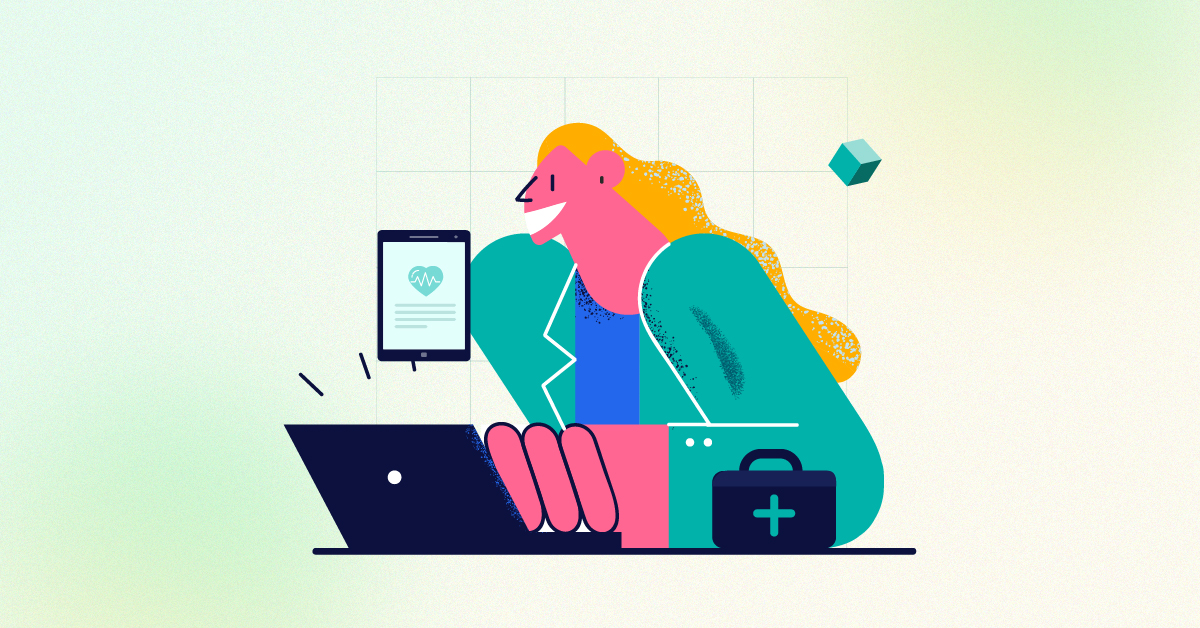The digital transformation has brought massive changes and innumerable opportunities for enterprises across the globe. Healthcare is not immune to this tremendous digital disruption. The introduction of digital health and ‘care everywhere’ will be a proven global strategy for addressing numerous healthcare industry challenges for the next few decades.
Additionally, with the surge of the 2019 pandemic, patients have become more active, informed, and open to taking proactive and preventive measures for their health. Investment in the right kind of technology can help healthcare providers, payers, and manufacturers to deliver quick, efficient value-based care.
According to American Medical Association (AMA), Digital Health Research, improved efficiency, and increased patient safety continue to be the primary reasons for care providers to use digital health tools. 1
Gamification in healthcare is one such technological intervention changing the face of healthcare as we know it. The healthcare industry is gradually becoming more receptive to gamification in various facets of health and care.
Gamification in Healthcare to Enhance Patient Care Outcomes
Do you measure your daily step count or have set a reminder to stand up from your work desk every 30 minutes, or do you have a smartphone application that motivates you to achieve your fitness goals?
If so, you’ve already been swayed by the magic of gamification.
Gamification simply means applying game-based approaches and techniques to non-gaming environments and making them more fun, interesting, engaging, and interactive.
In healthcare, gamification can provide ideal strategies for health promotion, disease prevention, self-management of chronic conditions, medication adherence, and telehealth programs.
Gamification in healthcare is fundamentally patient-centered, intending to increase patient engagement by personalizing their care experience. Gamification can assist patients in managing their health conditions more proactively and educating them through self-assessment and personalized remote care solutions.
Whether for diet, sleep, exercise, or emotional well-being, gamification in healthcare becomes a rich source of motivation and positive user behavior change. Fitbit, Apple, and Android watches are a few examples of wearable healthcare devices that effectively leverage gamification for wellness and fitness.
According to a report by Global Electronics Council, the wearables industry showed strong growth in the last few years. Market research firm Grandview Research estimated the size of this market globally to be US $16.6 billion in 2020 and anticipates a CAGR of 26.8% from 2021 to 2028.2
So, what makes gamification in healthcare so successful?
You are already aware of one of the components; it is motivation. However, one component is missing: loyalty towards the subject of change.
How can gamification lead to a high level of motivation and loyalty?
Gamification in healthcare offers a care pathway, tracks successes, creates competition, makes the whole process fun, initiates rewards achievement, and incorporates a feeling of community and socialization for maintaining loyalty and strong commitment.
Gamified solutions also help healthcare professionals, payers and stakeholders generate data efficiently, treat patients, and track their progress more accurately. Thus, reducing the workloads and taking some pressure off the system.
A mature strategy is required to capitalize on the benefits of gamification in healthcare. The following section lists the three-step strategy to integrate game-based applications into the healthcare systems.
Steps for a Successful Healthcare Patient-centric Gamifying Strategy
The gamification strategy must be designed to meet the varying stakeholder needs and transform user experiences from a simple interactive gaming app to integrating next-generation gaming solutions. The following points should be considered while implementing a gamified solution into a healthcare system.
1. Determine which problem areas you want to address with gamification. For example, patients lack focus while practicing yoga or meditation, non-adherence to medications and prescribed food and lifestyle changes, or other pre and post-surgical challenges in adhering to their care plans and recovery processes.
2. Once the objectives have been defined, orchestrate the construction of a care coordination application and integrate the gaming components that are most appropriate for your healthcare application. Two critical components of a gaming application are the game mechanics and the dynamics. The former is in charge of user engagement, while the latter is in charge of behavioral patterns.
3. Storytelling, levels, challenges, leader boards, prizes, avatars, and other gaming formats can be leveraged to develop a game and create immersive gaming experiences that seamlessly engage patients in their care plans.
Let’s take a closer look at a few of the gamification solutions that deliver value-based care and improve patient outcomes for modern healthcare.
Gamification in Healthcare: Use Cases
The rise and prevalence of social media and smartphones and a major demographic shift towards millennials are the few trends that support game-based solutions in the healthcare industry. Numerous healthcare-themed gamified solutions have gained popularity in recent years, including the following:
Motivating Physically Disabled Patients for Daily Exercise
People suffering from spinal trauma or dysfunction and using a wheelchair are at high risk of cardiovascular diseases. Being involved in daily exercises is challenging for them, and they frequently lack motivation. Daily activities do not contribute to maintaining the required level of activity. A mobile app that connects to the wheelchair and acts as a controller for customized games can assist patients in incorporating exercise into their daily routine.
Measuring Physical Fitness and Nutrition Levels
Obesity has become a global concern, and as a result, the use of healthcare solutions that allow users to track their nutrition and weight has grown in popularity. These applications help set personalized goals, measure diet levels, and monitor progress. A few advanced ones come with an option to get a personal trainer from the application.
Self-Management of Chronic Conditions and Medication Adherence
Educating patients about their chronic diseases can help simplify medication management using gamification. It can also improve patient compliance rates to get enhanced care outcomes. For example, patients having diabetes get reward points every time they exercise or a reward for a patient when they take their medications on time. A positive reward is enjoyable and helps improve the self-efficacy and confidence of a patient in defeating the disease.
Keeping Physical Therapy and Rehabilitation in Check
Following a severe injury, regaining even a degree of independence in terms of movement or other activity is difficult and time-consuming. Gamification in healthcare offers an opportunity to reimagine the physical therapy experience completely.
For instance, a telerehabilitation solution can assist doctors in controlling and directing patients’ movements while performing physical therapy exercises.
Concluding Lines
The value of gamification in healthcare has been recognized by healthcare providers, payers, pharmaceutical manufacturers, and wellness companies worldwide.
Gamification in healthcare can significantly affect patients’ health by promoting adherence to treatment, fostering resilience, increasing motivation to fight diseases, etc. Data generation via gamified applications, on the other hand, enables personalized care and product innovation.
Gamification in healthcare resolves the present-day healthcare problems and creates opportunities for future care. Thus, it is a win-win situation for both patients and healthcare providers.


